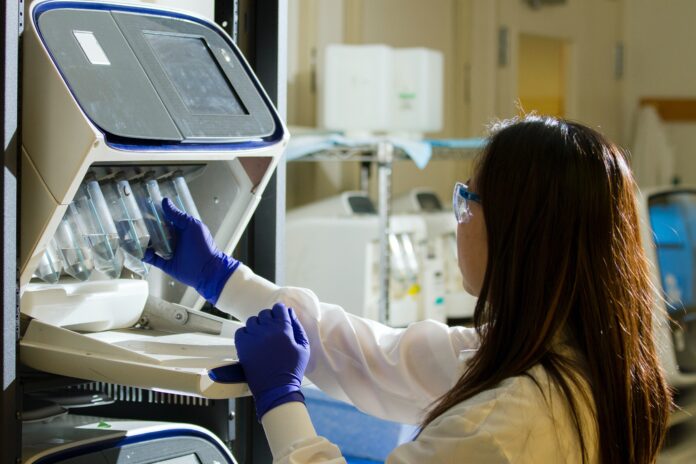The use of medical robots in healthcare has been on the rise in recent years. These robots are designed to perform various medical procedures, including surgeries, patient monitoring, and drug delivery. While medical robots offer numerous benefits, they also come with some drawbacks. In this article, we will discuss the advantages and disadvantages of medical robots.
Advantages of Medical Robots
Increased Precision
Medical robots are incredibly precise and accurate in their movements, making them ideal for performing delicate procedures. This precision reduces the risk of human error during surgeries, resulting in better outcomes for patients.
Also read: Difference Between Computers and Robots: A Comprehensive Guide
Reduced Recovery Time
With medical robots, surgeons can perform minimally invasive procedures that require smaller incisions. This reduces the amount of trauma the patient experiences, resulting in a faster recovery time and a shorter hospital stay.
Also read: 14 Disadvantages of Robots in the Workplace
Remote Access
Medical robots can be operated remotely, which is especially beneficial in emergency situations. Surgeons can control the robot from a different location, allowing them to perform lifesaving procedures even if they are not physically present in the operating room.
Improved Training
Medical robots provide an excellent training tool for medical students and surgeons. They allow trainees to practice complex procedures in a safe and controlled environment, without putting patients at risk.
Also read: Robotics and Sustainable Glass Production: Innovations and Opportunities
Enhanced Patient Safety
Medical robots reduce the risk of infection during surgeries by minimizing human contact with the surgical site. They also reduce the risk of complications by providing surgeons with real-time data on the patient’s condition.
Disadvantages of Medical Robots
Cost
Medical robots are expensive to purchase and maintain. The high cost of these robots can make them inaccessible to smaller healthcare facilities, limiting their use to larger hospitals.
Also read: Robotics and Sustainable Metal Production: Innovations and Trends
Technical Malfunctions
Like all technology, medical robots are prone to malfunctions. If a robot malfunctions during a procedure, it can put the patient’s life at risk. Additionally, fixing a malfunctioning robot can be time-consuming and costly.
Lack of Human Touch
While medical robots are precise and accurate, they lack the human touch that is essential for patient care. Patients often find it difficult to connect with a robot, leading to feelings of isolation and loneliness.
Limited Scope of Use
Medical robots are designed to perform specific tasks and are not versatile enough to perform all medical procedures. This limits their scope of use and requires healthcare facilities to invest in multiple robots to perform various procedures.
Also read: Miso Robotics Investment Review: Analyzing the Future of AI-Powered Robotics
Job Displacement
The increased use of medical robots has raised concerns about job displacement. As more procedures are performed by robots, there is a risk that healthcare professionals will be replaced by machines, leading to job losses in the industry.
Conclusion
Medical robots offer numerous benefits in healthcare, including increased precision, reduced recovery time, and improved training. However, they also come with some drawbacks, including high costs, technical malfunctions, and job displacement. Healthcare facilities need to carefully weigh the advantages and disadvantages of medical robots before deciding to invest in them.
Also read: The Advantages of Automation in Glass Manufacturing
FAQs
1. Are medical robots safe?
Medical robots are designed to be safe, but like all technology, they can malfunction. Proper maintenance and regular inspections can reduce the risk of malfunctions.
2. How much do medical robots cost?
Medical robots can cost hundreds of thousands or even millions of dollars, making them expensive for many healthcare facilities.
3. Can medical robots perform all medical procedures?
No, medical robots are designed to perform specific tasks and are not versatile enough to perform all medical procedures.
4. Will medical robots replace healthcare professionals?
While the increased use of medical robots has raised concerns about job displacement, it is unlikely that they will replace healthcare professionals entirely. Medical robots are designed to work alongside healthcare professionals, not replace them.
5. Can medical robots improve patient outcomes?
Yes, medical robots can improve patient outcomes. By reducing the risk of human error, providing real-time data, and performing minimally invasive procedures, medical robots can improve the accuracy and safety of medical procedures, resulting in better outcomes for patients.
6. Are there any ethical concerns regarding the use of medical robots?
Yes, there are some ethical concerns regarding the use of medical robots, including the potential for dehumanization of patient care and the impact on the job market for healthcare professionals.
7. How do medical robots work?
Medical robots are controlled by a surgeon or healthcare professional using a computer interface. The robot is equipped with specialized instruments and cameras that allow the surgeon to perform the procedure with precision and accuracy.
8. What is the future of medical robots in healthcare?
The use of medical robots in healthcare is expected to continue to grow in the future. Advances in technology are making medical robots more versatile and accessible, and they are expected to play an increasingly important role in healthcare in the years to come.
9. What are some examples of medical robots?
Some examples of medical robots include the da Vinci Surgical System, which is used for minimally invasive surgeries, and the RIBA (Robot for Interactive Body Assistance), which is designed to assist patients with mobility impairments.
10. How can healthcare professionals prepare for the increased use of medical robots?
Healthcare professionals can prepare for the increased use of medical robots by staying up to date with the latest advancements in technology, learning how to operate and use medical robots effectively, and understanding the potential benefits and drawbacks of medical robot use in healthcare.

